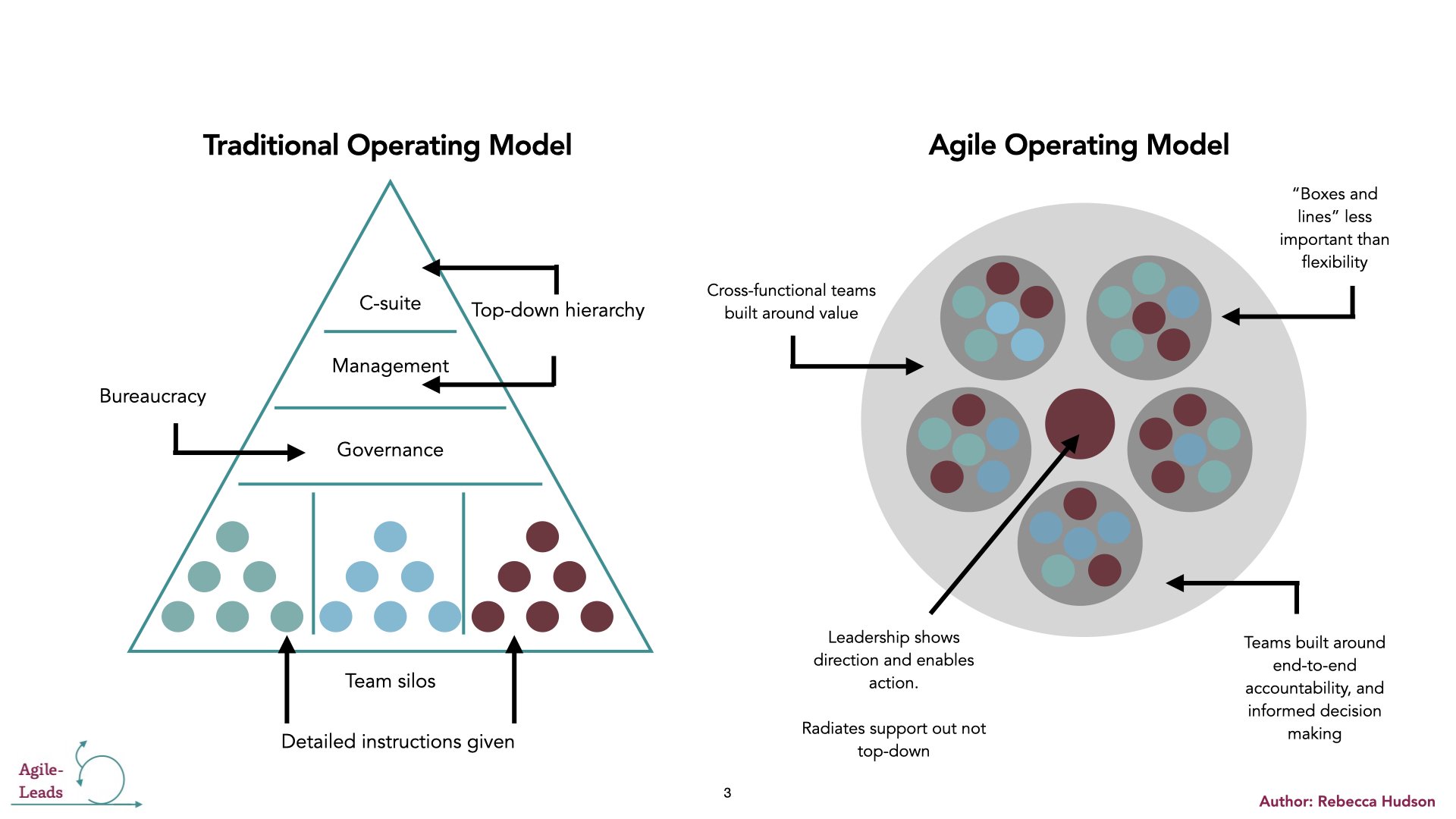Adoption vs. Transformation
Agile is gaining increasing adoption across many large organisations. Agile methods have moved beyond just software development. However, there is ongoing confusing as to what is meant by Agile Adoption, Agile Transformation and Digital Transformation.
In this post I’ll explore -
Agile transformation vs. Agile adoption
Agile transformation vs. Digital transformation
Traditional operating models vs. agile operating models
Agile adoption in the context of digital transformations
What is agile? If we look at dictionary.com we’ll get this explanation:
‘Agile [aj-uhh, -ahyl] — quick and well co-ordinated in movement’.
On Atlassian.com/agile you’ll find this explanation:
‘The agile methodology is a project management approach that involves breaking the project into phases and emphasises continuous collaboration and improvement. Teams follow a cycle of planning, executing, and evaluation.’
I think the concept of agile is pretty straightforward. I find confusion comes when we interchangeably talk about digital or agile transformations, or when we start conflating agile adoption and agile transformation.
I’ve tried to boil down the key elements of each and their interrelationships, into some simple bullets:
Agile Adoption vs. Agile Transformation
Agile Adoption:
The act of a team adopting an agile project management framework such as Scrum, Lean or Kanban
Scaling agile to a pillar, department or discipline within an organisation
Very little structural change is involved to the organisation
Agile Transformation:
Transitioning an entire organisation to a nimble, reactive approach based on agile principles
Agile becomes an organisation-wide operating model, not a simply a framework adopted in some parts of the business
Digital Transformation vs. Agile Transformation
Digital Transformation:
Focused on implementing emerging technologies, and ‘future proofing’ the digital eco-systems on which an organisation relies
Implementing a digital transformation with agile methodologies ensures the digital transformation can keep pace with the latest technologies
Teams implementing a digital transformation by adopting agile, may still operate within a business that has a traditional operating model
Agile Transformation:
A wide ranging operational and organisational change, and can take an established company years to undertake
Its a journey, and requires significant evolution to an organisations Structure, People, Processes and Technology
If an organisation undergoes an agile transformation alongside a digital transformation, it is more likely to have a highly success digital transformation, implemented more effectively than in a traditional organisation
I’ve led delivery teams in mapping the approach for extensive digital transformations. Where the entire front / back of house systems are legacy, processes are manual and data is not centralised. It’s a complex undertaking.
I’ve seen the best laid plans of Digital Transformations stall, with teams or outside consultants experiencing these challenges:
Teams / business units are siloed, so unaware of what each other is working on
Some work streams / projects may cannibalise each other
No individual or team has knowledge of the entire digital eco-system of the organisation
C-suite or leadership teams are not operating with shared values or vision
Business units are working to conflicting objectives
No one has a ‘big picture’ view, as such value gaining opportunities may be lost
Decision making takes place as the top level of management, leading to long, protracted feedback, review and approval cycles
Decision making is not data driven
Manual and / or legacy processes, systems and tools are in place
Skillsets and roles are traditional, and do not reflect the needs of cross-functional digital product and service development
Adopting agile practices / frameworks as part of a digital transformation programme would address some of these challenges.
Whether its scaling from a simple Kanban board, to introducing pilot teams who adopt agile frameworks and team models such as Scrum, it can help tackle some of these issues.
However, to address wider, more structural challenges such as strategic misalignment or a command-and-control structure, the organisations operating model would need to shift drastically to embrace true business agility. For example:
An agile operating model:
Transforms traditional ‘management’ into transformational leadership, putting them at the heart of the business, to radiate out direction, rather than dictate decisions from the top down
Day to day decisions move to the teams, in turn leadership can focus on more strategic decision-making without slowing down the velocity of day to day operations
Teams are empowered, they have accountability and can access the skillsets and support they need from other teams and business units easily and quickly
The Agile organisation’s culture is built on trust, freedom, responsibility and builds talent density by putting the right people together to make the right decisions
Hopefully this sheds some light on the differences between adoption and transformation, in relation to digital programmes and agile ways of working!
Read my other blogs for further background into these subjects.


